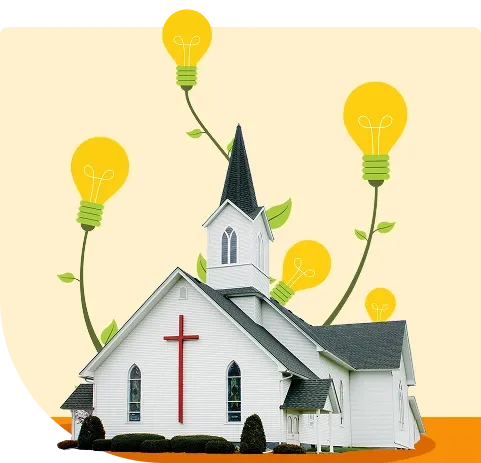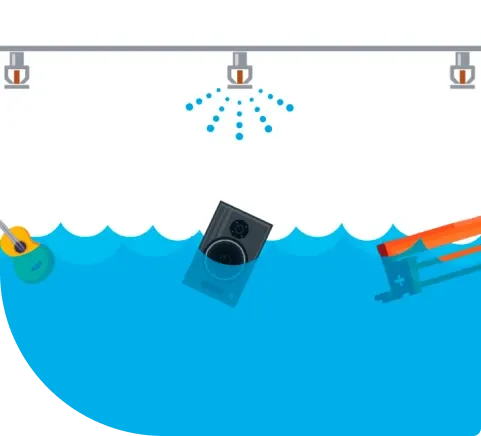Before you do a new thing
Article from When Outdated Bylaws Backfire, an edition of our risk management magazine, Resilient Ministry.
5 min read

As a ministry leader, you see your community and its needs in a way no one else does. Where some people see a gap or oversight in the community, you might see an opportunity to extend love and support to people in need. But it’s important to set a strong foundation before you jump into a new project head-first. A lasting impact often relies on a well-built strategy and thoughtful implementation.
“I often work with leaders who have visionary ideas for serving their community — whether it’s a low-cost laundromat for people struggling with hygiene poverty or mobile mission that offers free wellness services on wheels,” said Kathy Bruce, director of the Brotherhood Mutual Foundation. “One thing all of these initiatives have in common is their dedication to creating a sustainable, strategic plan for their program’s success.”
Nurturing an Idea
While it is easy to get caught up in the excitement of doing something new, Bruce emphasizes that longterm planning is the key to making a measurable impact and changing lives in the community.
“The elements of your strategic plan might be the most important piece of documentation you keep regarding your program,” she said. “This document will show the research and planning you’ve done before launching your new program.”
As you put together a strategic plan, consider these essential questions to help cultivate a strong, sustainable program:
1. What is the problem you’re trying to solve?
Explaining the problem your program or organization wants to solve will help you create boundaries around your goals and offer a succinct summary to anyone who wants to learn more.
2. Who are you serving?
No program can benefit everyone—which means it’s important to have a clear definition of who you are serving. The deeper you can narrow the profile, the better you’ll be able to identify where those people are and how you can reach them
3. Are there other organizations that have a program like yours?
Have you collaborated with them? It’s important to make sure your new program isn’t duplicating another organization’s efforts. Do research into other programs similar to your ministry’s so you can include details about them in your strategic plan. You can explain how you partner with other organizations in your community, or explain how your program differs from those that may be similar.

4. How much will your program cost?
What resources do you have? What are you missing? Look at the overall costs for your program (including staffing, labor hours, equipment, etc.), and set a predicted budget for your needs. Indicate where you’ve already been able to receive funding, where your gaps are, and how you plan to fill those gaps. If you can itemize a list of your start-up and ongoing costs, you can provide clarity into your financial goals and the support you’ve already collected. Financial sustainability is an important element of a successful program, and taking a high-level view of your expenses and budgetary needs from the start will help you develop an effective plan.
5. What is your plan for sustainability?
Share your vision for the future, including your plan for helping your program thrive beyond your immediate needs. Will you grow your donor base? Do you hope to make your program self-sustaining? Will you apply for grant funding? Including this information in your strategic plan will show that you’ve spent time thinking about the future.
6. What are your metrics and goals for your program?
Set specific, measurable, achievable, relevant, and time-bound (SMART) goals. Explain why you’ve set certain goals and how you will track them.
7. How will you evaluate the results of your program?
Explain how you’ll know when your program or initiative has been successful. When you know what you want to accomplish—and how you’ll know when you’ve accomplished it—it’s easier to evaluate the goals you’ve set. It will also help you set new goals as needed.
Planting in Good Soil
As your program gets off the ground, it’s important to have clear financial records and documentation to show how you steward your resources and how the initiative aligns with your ministry’s sincerely held beliefs. This will be especially useful as you look for funding opportunities because most granting organizations want to see that your program has evidence of a strong foundation and sustainable processes.
“The elements of your strategic plan might be the most important piece of documentation you keep regarding your program.”
Grant applications often require financial statements and information about your mission and purpose. Records to keep on hand include your annual operating budget, expense reports, and designated responsibilities of financial decision makers. Additionally, keep your statement of purpose, statement of faith, and bylaws readily available to include or reference in applications. To read more about the importance of defining statements and bylaws, check out the feature article in this edition of Resilient Ministry, “When Outdated Bylaws Backfire.”
Reaping the Harvest
Creating a strategic plan before you launch a new program can help you identify roadblocks and solidify your vision to make a long-term difference in your community. It’s important to outline your specific goals, get ahead of challenges, and collect all your proper documentation before jumping into a program launch. When you check all the necessary boxes ahead of time, it will be easier to share your new initiative with the community and apply for funding to strengthen your program.


